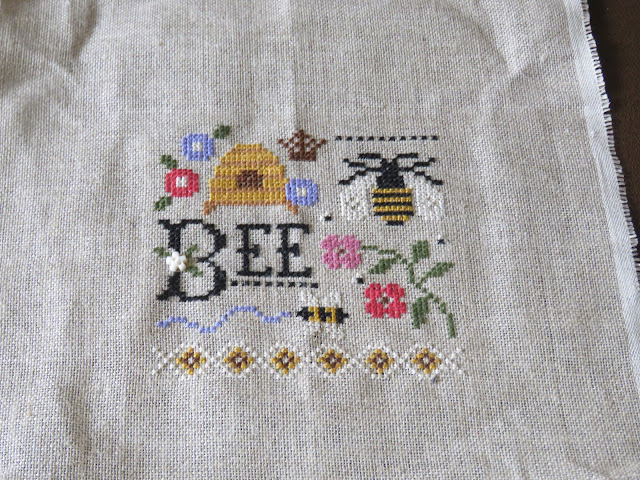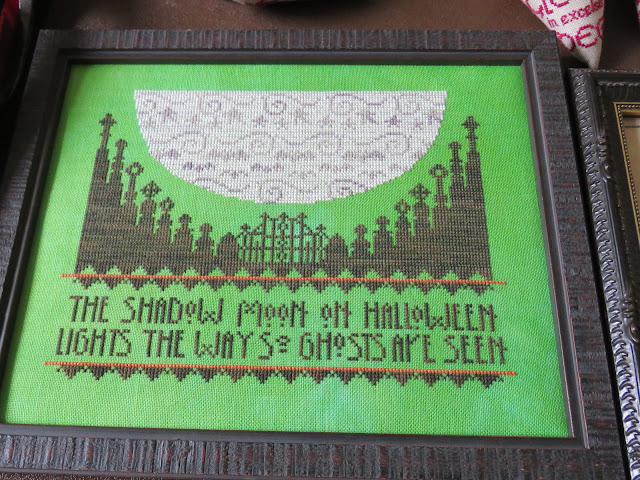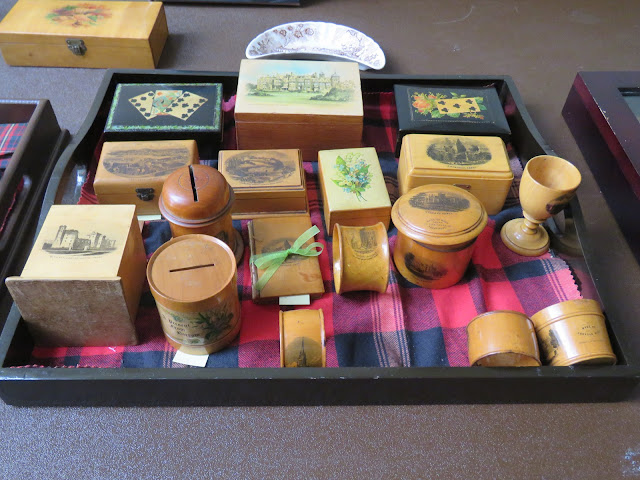- Updated -
Lots and lots to share again this month. I am going to mix it up a bit this month and put the Show 'n Tell first and boy did we have some great Show 'n Tell.
Here's a better look.
Squirrel and acorns by Ellen P. also. She certainly is ready for fall.
Strawberries abound! These beauties were stitched and finished by turbo stitcher Jean T.
"Fancy That" banner above and "Bee" from Lizzie Kate were stitched by new member Donna.
Hands on Design above and Lizzie Kate "Paw Prints" also stitched by Donna.
More from Donna....it was a one woman show

Close up of above
This "Shepherd's Bush", also from Donna
Have you heard about the Round Robin on Flosstube hosted by Country Stitchers? Below are two pieces.
How is works is you pick your fabric and fibers and decide on the border. You stitch the border and one corner of the piece and then rotate the fabric and fibers to the next person in the group. You get a new piece and you again stitch your same corner using their fabric and colors. Above is Lisa's. The meeting was the first time she saw her completed piece. She was thrilled.
Below is Donna's. Same designs but different colors. The different looks are equally gorgeous. The stitchers added their initials and their states to their panels. These girls had fun and are ready to do it again.
Next up two pieces stitched by Kathy R. The top on is La-D-Da and the bottom is a Hands on Design pattern.
These two punch needle pieces are by Cinda. Sorry for the sideways view on one Cinda ;-(
Below is the latest design from Theresa Baird of Hearts Ease Exemplar Workes. This design is not yet completed and for sale yet. Please check out her site for more information.
Above left, a frame weight by Patrick B. and on the right a canvas work purse stitched by Patrick for his wife. The back is finished with old jeans.
Stitching tote stitched by Pat Y.
Business Meeting
- The slate of officers nominated for office was shared -
- Vice President - Patrick Barron
- Programming Co-Chairperson - Stacy Stinson
- Treasurer - Nancy Fitzpatrick
- The Guild Sampler is currently with Deb and Liz
- 2020 will be our 20th Anniversary year. A committee will be formed and we will start planning in 2019.
- Shout out to DVHSG from the judges of the Rehoboth Exhibit. Our participants were recognized for the quality of pieces submitted. Gail Serna, Judge. Kudos to DVHSG!
Upcoming
- November
- Elections
- Sharon Verbos of The Purple Thread, will teach a pinch cushion class
- Sign-ups for the December Covered-Dish luncheon
- December
- Holiday Exchange - Bring a wrapped stitched (sampler themed) gift and be entered in the swap
- Covered-Dish luncheon
- January
- Share any holiday stitching gifts you received
- March
- Pam Darney Sampler Class
Program
We had an excellent program by members Marney B. and Francine C. They shared their collection of Mauchline Ware as well as their vast knowledge of Mauchline Ware.
Mauchline Ware gets it name from the town in Scotland where it originates. The origins are 17th century woodworking in the town which was the home of poet Robert Burns. It became popular in the Victorian Era. This was the time of the industrial revolution and 'commoners' wanted to emulate the wealthy.
Of the different finishes there is Tartanware, also known as checker-ware, transferware, fernware, photo ware and black lacquer ware.
 Pieces were made from the ‘plain’ tree or what we call the sycamore tree. Often pieces were labeled as to what and where the tree came from such as “made from wood of the plain tree in the grove on the Burns Property”.
Pieces were made from the ‘plain’ tree or what we call the sycamore tree. Often pieces were labeled as to what and where the tree came from such as “made from wood of the plain tree in the grove on the Burns Property”. The name of the woodworking company was not put on the box.
There are distinct Characteristics to Mauchline Ware, one of which is the finish. Once constructed, the finished piece would get coats and coats of varnish taking as much as 6 weeks for the finishing process. The interiors were left unvarnished. Interiors, if they finished, were often done with velvet in the case of a jewelry box or a type of paper known as Moroccan paper. Their bases were covered with the same paper that appeared to be leather but was actually a paper finish developed by W & A Smith, two brothers who specialized in Mauchline Ware.
Origins in the 17thcentury, woodworking that developed into wooden souvenirs and giftware popular in Victorian era.
W & A Smith started production of fine woodwork boxes in 1823. The same factory continued to make fine wooden boxes until 1938, when fire destroyed the factory that had been operated by three generations. In addition to having a factory in Mauchline, the brothers also maintained warehouses in Birmingham, England and had sales agents in Paris and the US. Mid-19thcentury when snuff use was not as popular, only the box maker that could adapt to the consumer was able to stay in business. The brothers starting to use steel plates to create pen and ink style drawings. In the 18thcentury, boxes made were snuffboxes. These were boxes that held ground and pulverized tobacco that was inhaled. Snuffboxes had to be airtight. That alone speaks to the quality and precision of these boxes.
In 1866, Archibald Caledonian started using ferns and photographs to apply to the tops of the boxes. The English loved to garden and while attempting to emulate the rich and share the love of nature, ferns, seaweed and shells were the natural next additions to Mauchline Ware. Ever adaptable, the Smith Brothers moved to Fernware when the fad turned to it.
J. P. Coats & Clark, Singer, and John James Needles took up popular uses of the boxes. Thread boxes were commission by the manufacturers and had grommets (made of bovine bone) for passing the thread through. Pieces could often be opened to find advertisements in the lid.
The grommets can be seen on the two round pieces in the upper right of the tray and in the second photo below.
Typical souvenir types
The Reform Act of 1832 created a middle class and they became the buyers. The industrial revolution and the railroads created the means to get these products to the masses. With the railroads and a means of travel for Victorians Era provided the ease of travel to the seaside resorts. Visitors wanted souvenirs to return home with.
After mechanizing the production of the hidden hinge, mass production started. Between 1820 and 1850, 50 different styles of specialty boxes were in production by the Smith Brothers of Mauchline.
In American, the scenes on the boxes were Atlantic City, Asbury Park, Philadelphia, Watkins Glen, and Niagara Falls. These seemed to parallel the scenes of the Hudson School as the time.
This was an excellent and interesting presentation! This observer was hooked and came right home and bid on a couple of pieces on eBay. I didn’t follow closely enough to be the winning bidder but there always is next time!
For those who stuck with me, sorry for installment plan. Not easy sometimes to get the uninterrupted hours needed to do the post!














































No comments:
Post a Comment